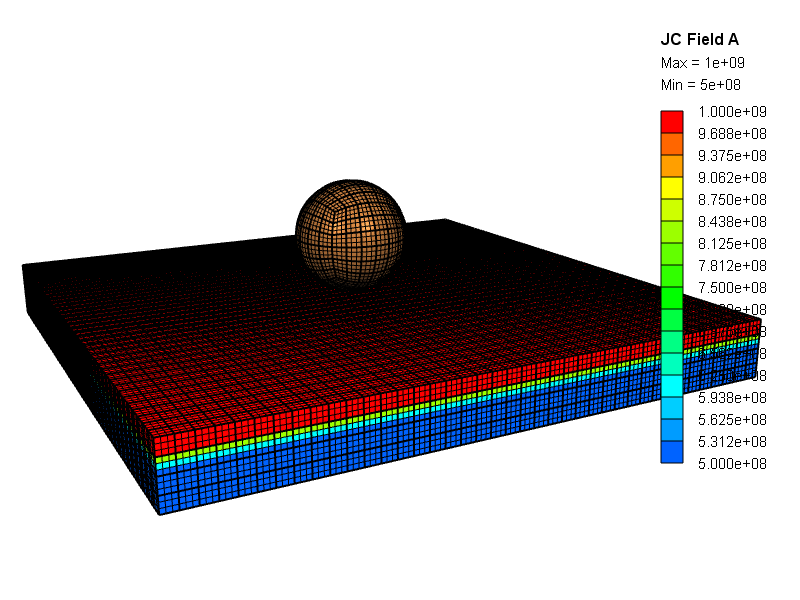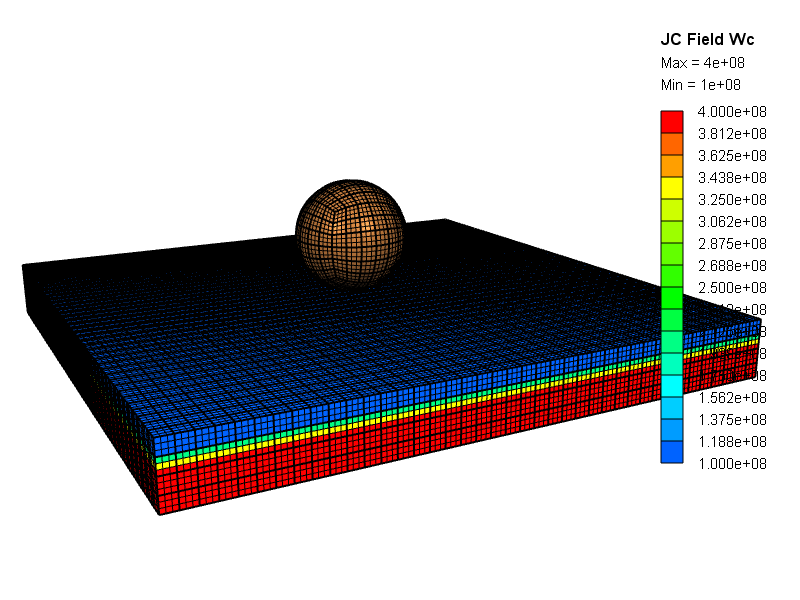MAT_JC_FIELD
Material properties
"Optional title"
mid, $\rho$, $E$, $\nu$
$A$, $B$, $n$, $C$, $m$, $T_0$, $T_m$, $\dot{\varepsilon}_0$
$C_p$, $k$, $W_{c0}$, $c_1$, $c_2$, erode
Parameter definition
Description
Field version of Johnson-Cook's constitutive model. All parameters (including density) can be functions or parameters. A function can be defined to depend on the initial integration point location $(x,y,z)$. A function is referenced by typing fcn(id), where id is the function ID.
The von Mises flow stress is defined as:
$\displaystyle{\sigma_y = \left( A + B(\varepsilon_{eff}^p)^n \right) \cdot \left( 1 + C \cdot \mathrm{ln}\left( \frac{\dot\varepsilon_{eff}^p}{\dot{\varepsilon}_0} \right) \right) \cdot \left(1 - \left( \frac{\mathrm{T}-\mathrm{T}_0}{\mathrm{T}_m - \mathrm{T}_0} \right)^m \right)}$
$T$ is the current temperature. The hydrostatic pressure $p$ is defined as:
$p = -K \varepsilon_v + 3K \alpha_T (T-T_{ref})$
where $K$ is the bulk modulus, $\varepsilon_v$ is the volumetric strain. $\alpha_T$ is the thermal expansion coefficient and $T_{ref}f$ is the reference temperature (see PROP_THERMAL).
Failure modeling is currently limited to a Cockcroft-Latham criterion that has been extended to account for rate effects. Failure occurs once the damage parameter, D, has evolved from 0 to 1.
$D = \displaystyle{\int_0^{\varepsilon_{eff}^p} \frac{\mathrm{max}(0,\sigma_1)} {W_{c0} \cdot (1 + c_1 \dot\varepsilon_{eff}^p)^{c_2}}} \mathrm{d}\varepsilon_{eff}^p$
Example
JC Field with function
A plate where the yield stress (A) and damage parameter (Wc) are functions. The functions depend on the distance from the upper surface of the plate (see built in function dist_surf).


